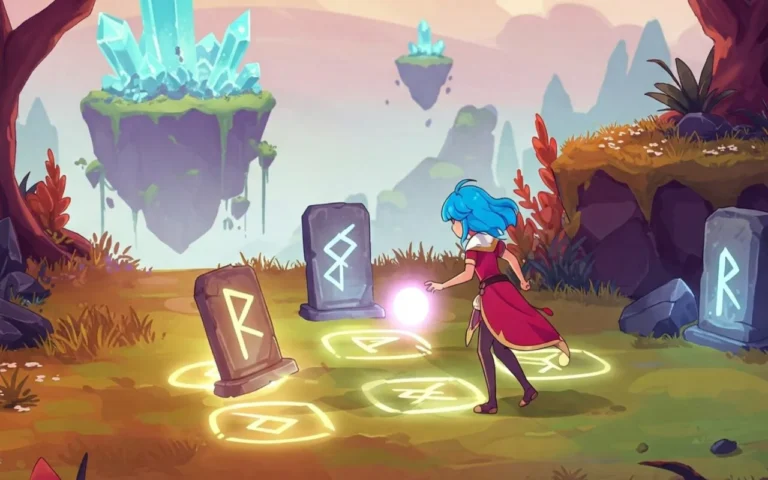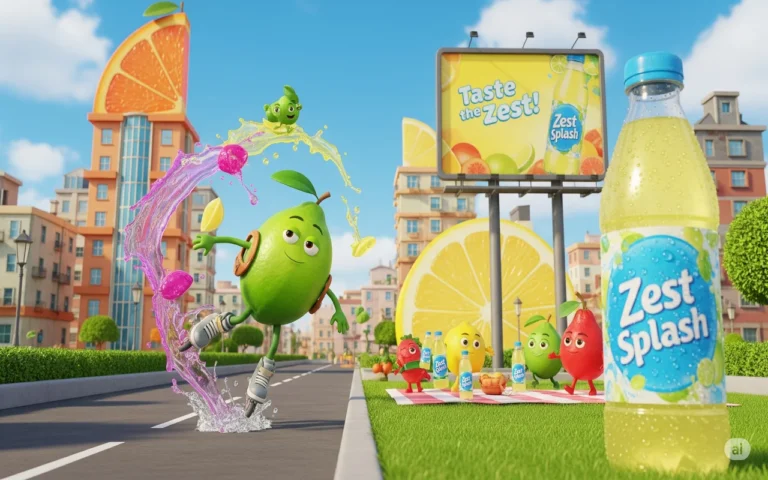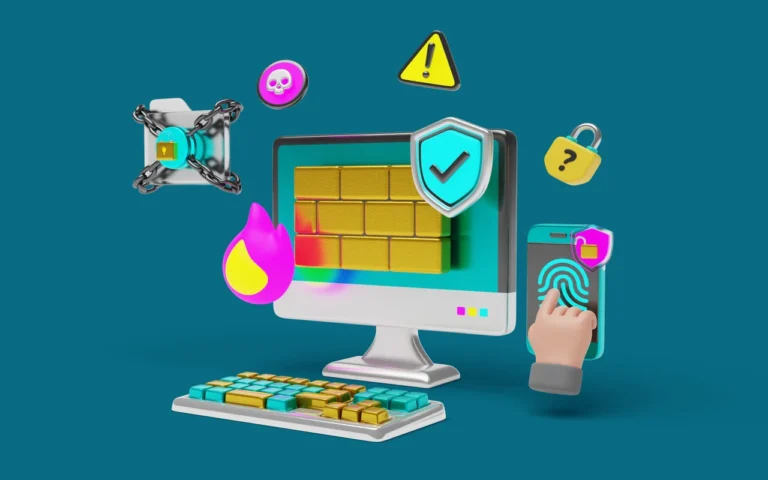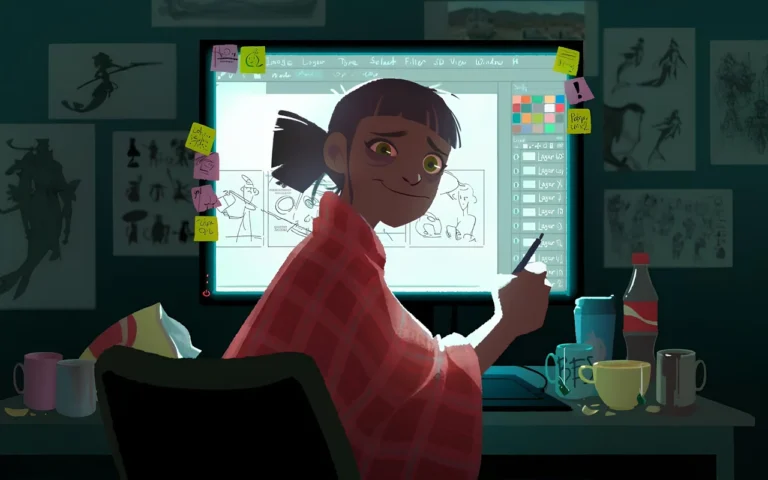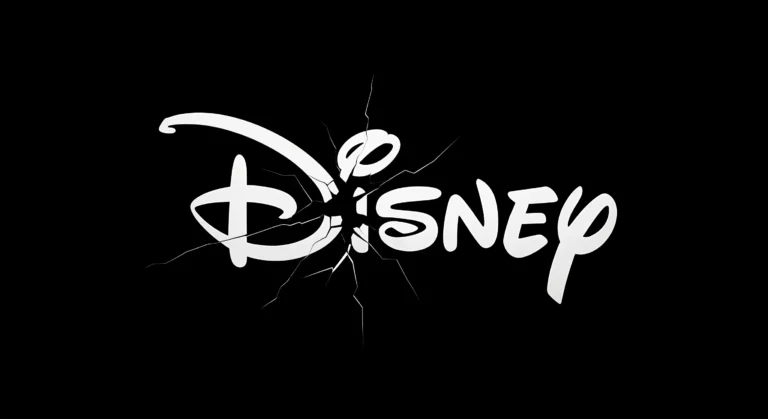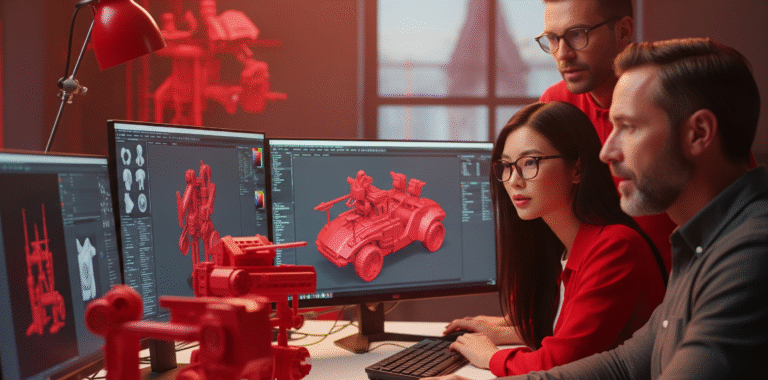Have you ever wondered why some art projects look harmonious and visually appealing while others lack visual cohesion? That’s exactly the difference art directors make. Art directors define the visual identity and the style of an art project. They play an indispensable role in many creative projects, including film, animation, games and publishing. In this post, we will explore the role of an art director.


Need Game Art Services?
Visit our Game Art Service page to see how we can help bring your ideas to life!
Responsibilities of an Art Director
Art directors have different responsibilities based on the type of industry they work in. It is difficult to precisely define what they do without considering a specific industry. However, there are universal tasks that are typically handled by art directors. Let’s explore the responsibilities of an art director.
Creating Visual Styles
Art directors define the visual style of a project. They interpret how a project should look based on the story or the expectations of clients or creative directors. They provide artists with visual references and ensure the art created by them aligns with the desired look for the project.
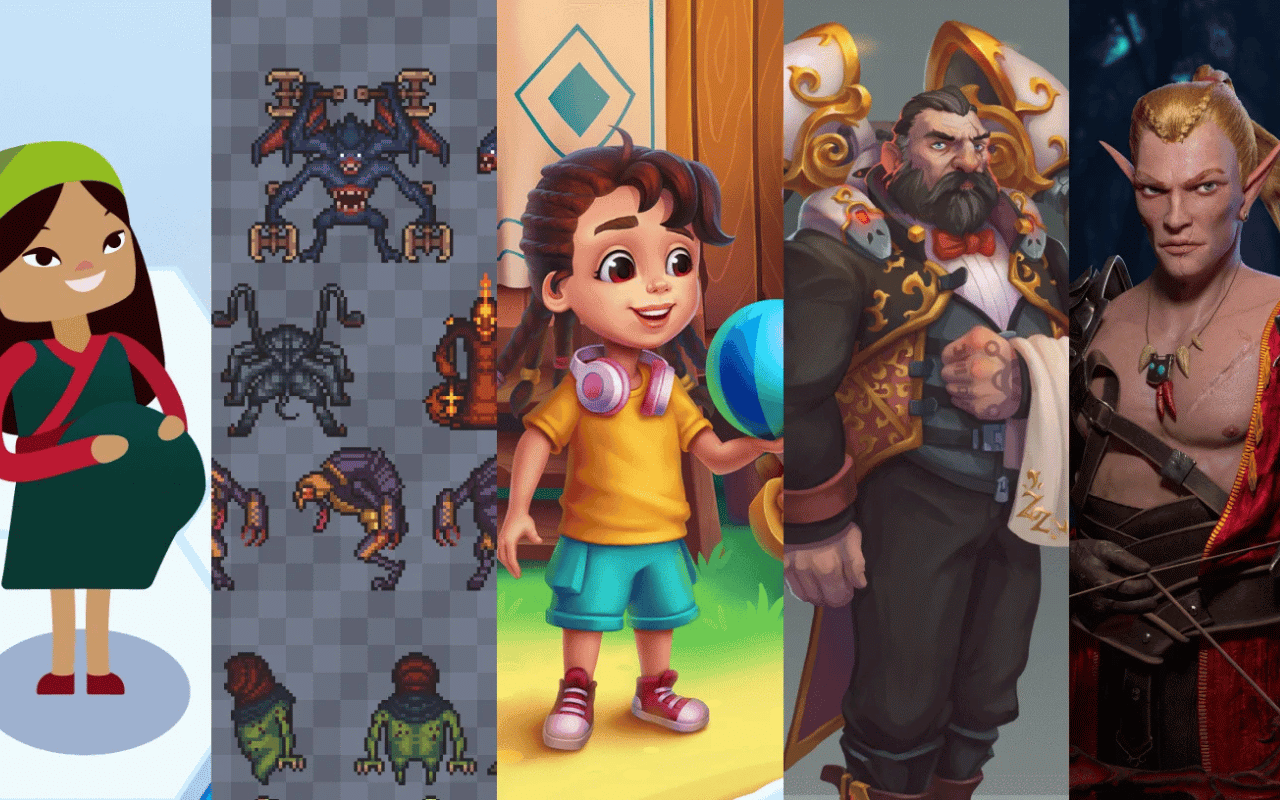
Guidance, Supervision, and Quality Control
An art director is also responsible for providing artists with guidance that helps them produce art that matches the visual style a project is aiming for. They oversee the entire art production pipeline and apply quality control measures to ensure the created art meets the project’s requirements.
Communication with Stakeholders
Another important task art directors should manage is ensuring that directors, managers and stakeholders approve the visual style of the project. They should have constant communication with key decision-makers throughout the entire project to keep the project visually in line with the expectations of key people.
Read More: Game Director vs Creative Director
Skills Required to Become an Art Director
An art director is expected to have a wide range of technical and interpersonal skills. While the required technical skills are different based in every industry, there are some skills that are required for almost any art director regardless of the creative industry they work in.
Technical Skills for an Art Director
Art directors should have a strong command of the type of art involved in the project they are directing. For example, if it is a game project, they should be highly familiar with the process of creating assets for games and how different art styles affect the project’s atmosphere. While if they are working on a publication, they should understand color theory and graphic design to be able to create visually engaging material.
Project Management
Project management skills are crucial for art directors. They should be aware of timelines and track the progress of every individual task to ensure that deadlines will be met. Being able to provide cost estimates and making sure the project is staying on the budget is also a crucial project management skill for art directors.
Attention to Detail
Attention to detail is a vital skill for art directors. They oversee proper implementation of the project’s design. Being able to focus on the visual details and ensure they fit harmoniously in the big picture is an essential trait for an art director. They are also responsible for quality control in art creation which demands great attention to detail as well.
Leadership and Communication Skills
Communication and leadership skills are crucial skills for an art director. Constant communication between team members and stakeholders is necessary in an art project. Being able to meet the expectations of decision makers and also the ability to transfer design decisions to the production team and lead them to achieve the desired results are highly essential skills for an art director.
The Art Direction Process
The art direction process usually starts with determining the visual style that fits the project. Art directors should have a clear idea of what directors, clients or stakeholders expect from the project. They define the desired look for the project and assign concept artists to create reference images based on design decisions.
Reference images guide artists on how to achieve the desired visual look. Collaboration with production teams to ensure that their work aligns well with the project’s requirements is also an important step in the process.
Ensuring the final product meets the project’s visual requirements is the next natural step. Art direction usually ends with receiving feedback and assigning production teams to apply final polishes if needed.
Art Director vs. Other Creative Roles
The responsibilities that are specific to an art director sometimes overlap with other creative roles. Drawing a clear line between different roles is not always easy. There are some roles that specifically handle tasks that are very similar to those of an art director.
Art Director vs. Creative Directors
Although similar in some responsibilities, these two roles have significant differences. Art directors are responsible for the visual aspects of the project, while creative directors oversee every aspect of a creative project, including sound, graphics, visual effects, storytelling, and even marketing. Overall, creative directors have a broader range of responsibilities.
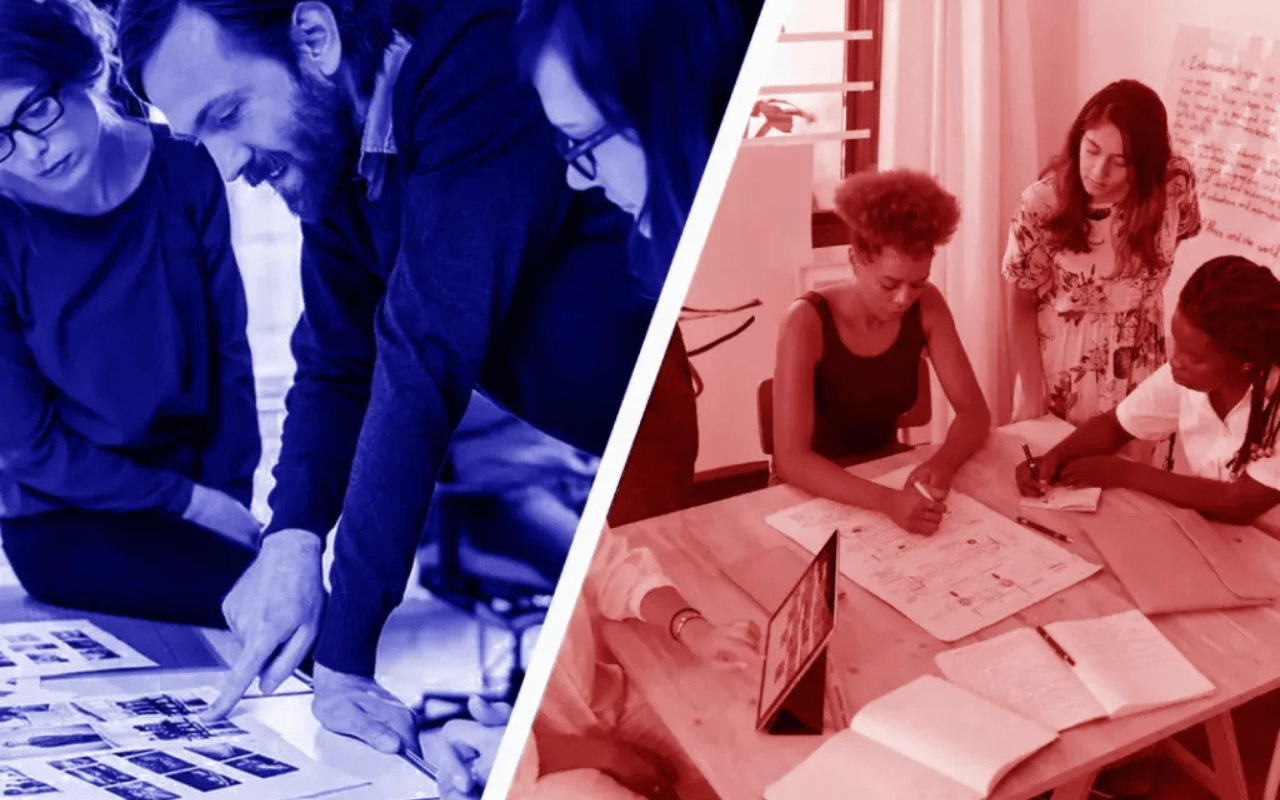
Art Director vs. Concept Artist
Concept artists have similar roles to art directors as well. They create concept art for characters and environments based on the directions and requirements defined by the art director. Art directors might lead several concept artists and assign them to create reference images.
Art Director vs. Technical artists
Technical artists are responsible for bridging the gap between technical teams and artists. They have similar responsibilities to art directors in terms of communication and planning. A technical artist facilitates the process of creating art and implementing it into the final product by improving workflows. Their role is more inclined towards execution and problem-solving compared to the conceptual nature of an art director’s job, which is focused on the overall vision and style.
Industry-Specific Roles for Art Directors
Although the primary goal of an art director is to define what a project should achieve visually, their roles and responsibilities differ from one industry to another. This section will cover the industry-specific roles of an art director.
Art Directors in the Animation Industry
An animation director in the animation industry is responsible for defining the visual style and tone of a project. They define the design for various elements such as backgrounds, lighting, character design, and visual effects to ensure all visual elements look cohesive and match the initial design.
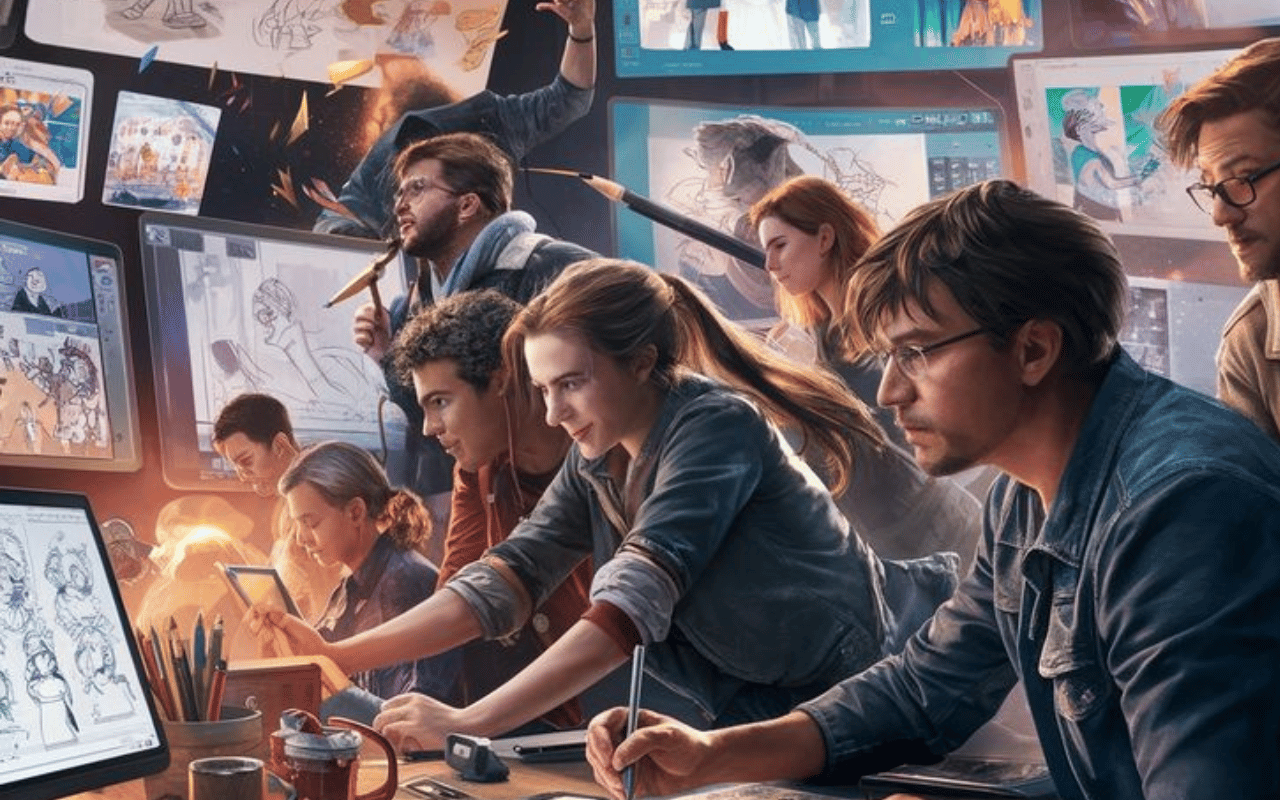
Art Directors in the Game Industry
A game director in the game industry defines visual concepts for characters, environments, assets, visual effects, menus and more. They work closely with artists, animators and developers to ensure the proper implementation of visual objectives for the project.
Read More: Everything about Game Director Job
Art Directors in the Film and TV industry
In the film and television industry, art directors define the visual look for sets, props and costumes. They ensure the visual elements in the project match the plot’s atmosphere. They are responsible for understanding the original setting of the story and translating it into visual elements in the production.
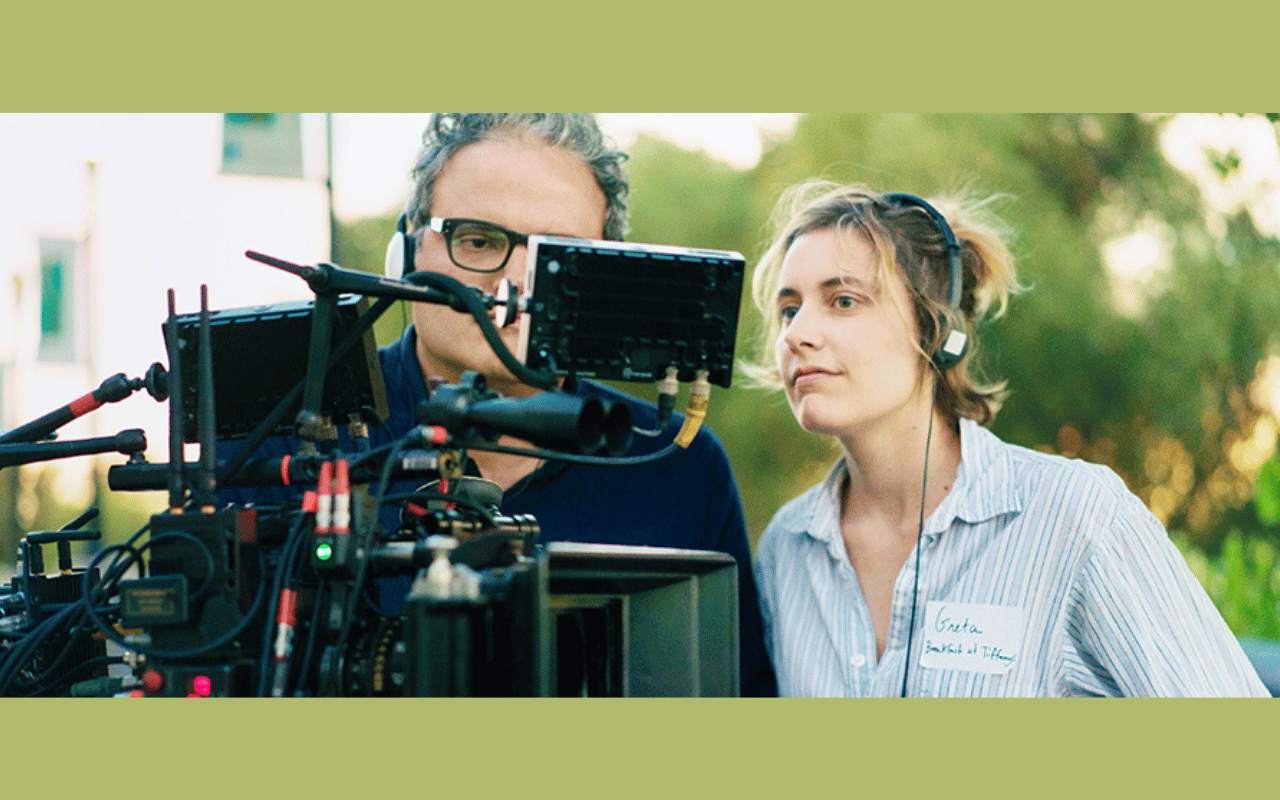
Art Directors in Publishing
Art directors define the layout, illustrations, photographs, colors and the overall theme of a print media. They work with editors to understand the tone of the articles and news stories and guide illustrators and graphic designers to create the desired visuals. They should create styles that engage readers and provide the print media with a visual identity.
Career Path and Development for Art Directors
Like many creative careers, there is not a linear path that leads to getting an art direction job. However, to become an art director, one can follow a career path that involves starting from entry-level positions and progressing to the top. Let’s explore a typical route taken by an art director.
Acquiring Foundational Art Skills
An aspiring art director should have foundational art knowledge that includes skills such as drawing, color theory, graphic design, visual storytelling, lighting and more. Getting an art degree is a good way to acquire this knowledge, but it’s not essential. Any form of self-study that can equip an individual with this knowledge is sufficient.
Getting a Job as an Entry Level Artist
Art directors should have a strong command of the creative process involved in the industry. They usually start their career by getting an art-related position. Whether it’s a 2D artist job or a 3D modelling one, being able to produce art professionally before progressing to more advanced roles is essential.
Getting More Experience
The next step is getting more experience and creating a strong portfolio. Working on different projects helps create that artistic taste and become well-rounded in the art production pipeline. This gradually leads to more senior roles like a senior artist or a lead artist.
Stepping Up as the Art Leader
Naturally, the next step for an aspiring art director is to develop communication and leadership skills. The ability to lead a team to achieve design visions is not something that every artist has. Demonstrating these traits alongside the artistic vision is the final step that will help you get considered for an art direction role.
Final Words
Art directors are highly creative individuals who define the artistic vision and style of a project. They are highly sought after in the creative and entertainment industry due to their ability to understand clients’ and stakeholders’ visions and translate them into actionable steps taken by various teams. The role involves serious challenges and requires multidisciplinary skills to fulfil the tasks. It can be an interesting career opportunity for individuals who enjoy creating the big picture for creative projects and are willing to manage and direct people.


